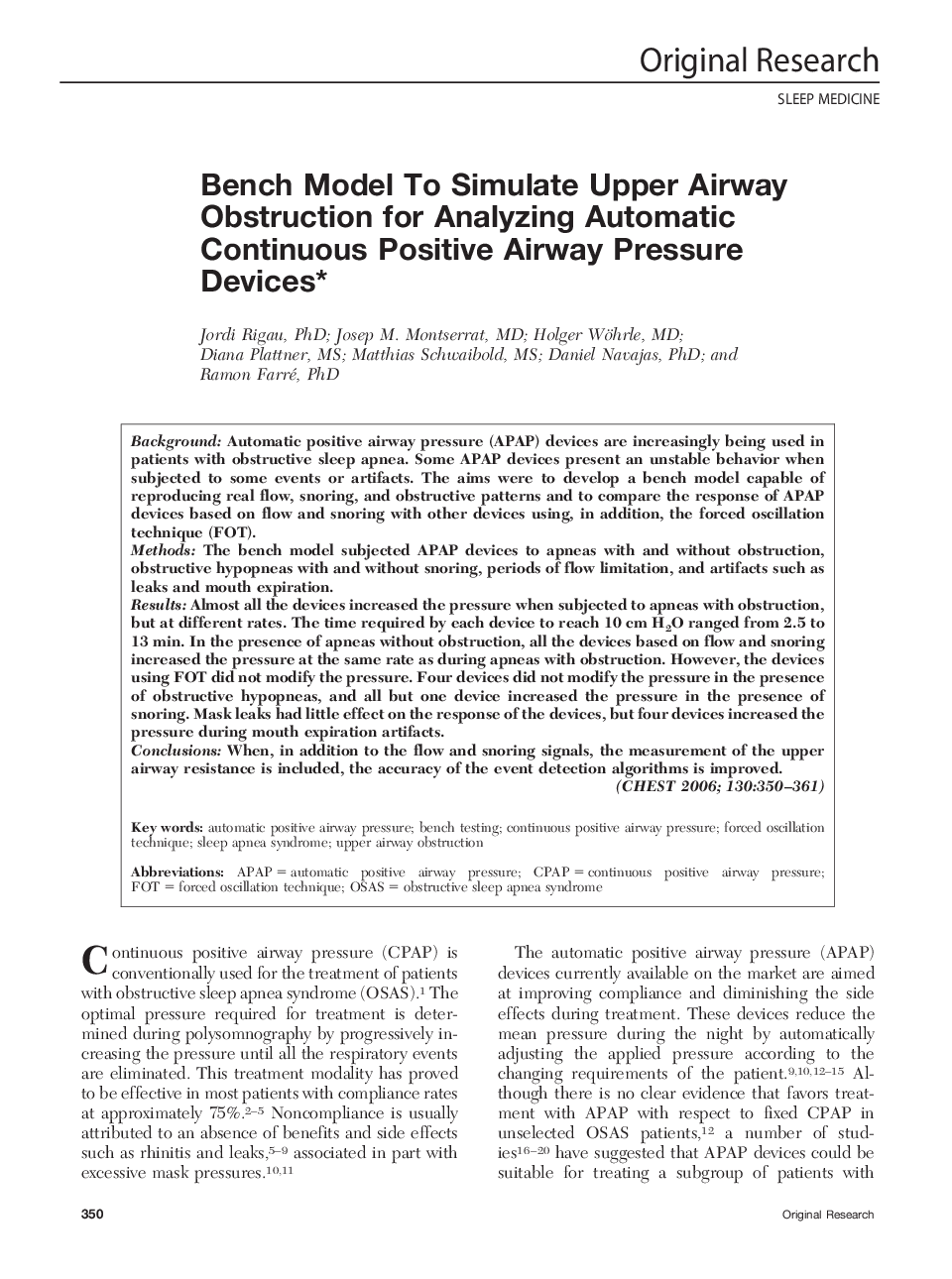| Article ID | Journal | Published Year | Pages | File Type |
|---|---|---|---|---|
| 2905634 | Chest | 2006 | 12 Pages |
BackgroundAutomatic positive airway pressure (APAP) devices are increasingly being used in patients with obstructive sleep apnea. Some APAP devices present an unstable behavior when subjected to some events or artifacts. The aims were to develop a bench model capable of reproducing real flow, snoring, and obstructive patterns and to compare the response of APAP devices based on flow and snoring with other devices using, in addition, the forced oscillation technique (FOT).MethodsThe bench model subjected APAP devices to apneas with and without obstruction, obstructive hypopneas with and without snoring, periods of flow limitation, and artifacts such as leaks and mouth expiration.ResultsAlmost all the devices increased the pressure when subjected to apneas with obstruction, but at different rates. The time required by each device to reach 10 cm H2O ranged from 2.5 to 13 min. In the presence of apneas without obstruction, all the devices based on flow and snoring increased the pressure at the same rate as during apneas with obstruction. However, the devices using FOT did not modify the pressure. Four devices did not modify the pressure in the presence of obstructive hypopneas, and all but one device increased the pressure in the presence of snoring. Mask leaks had little effect on the response of the devices, but four devices increased the pressure during mouth expiration artifacts.ConclusionsWhen, in addition to the flow and snoring signals, the measurement of the upper airway resistance is included, the accuracy of the event detection algorithms is improved.
